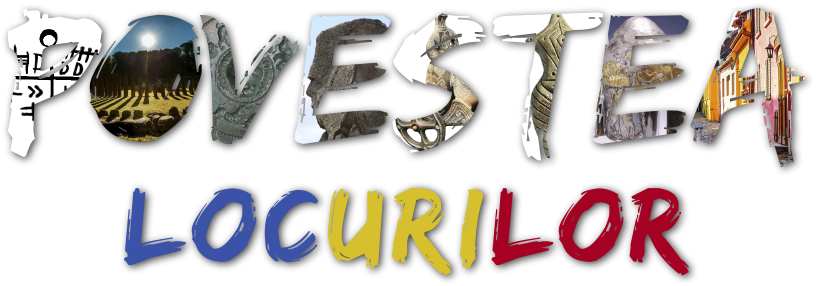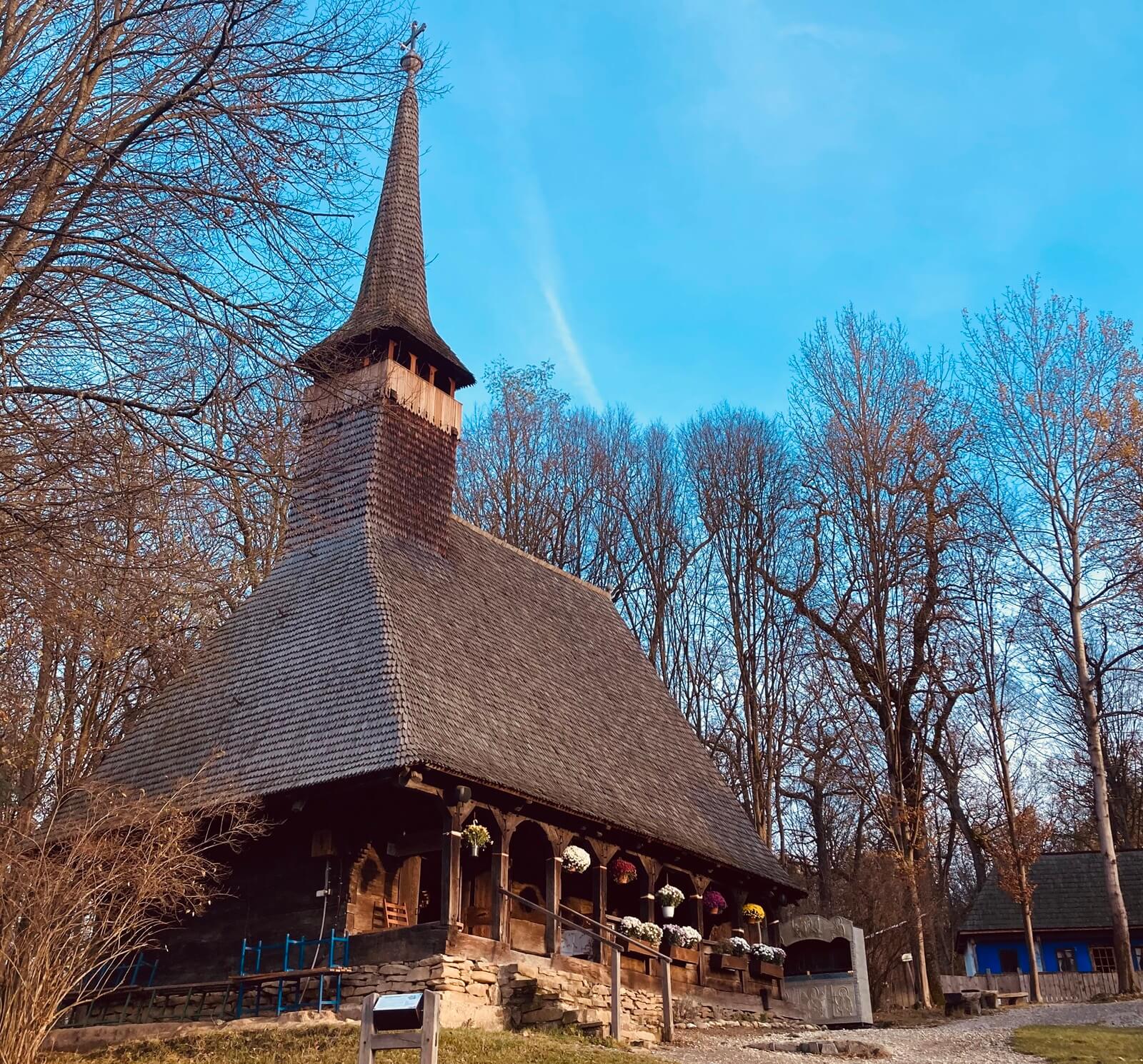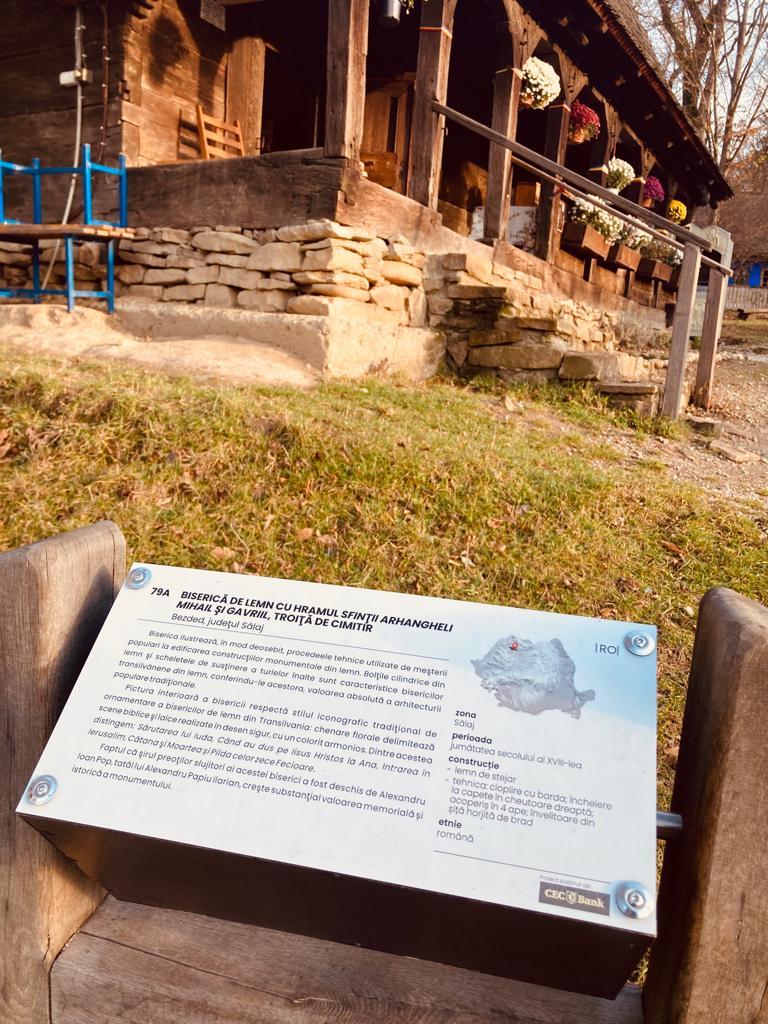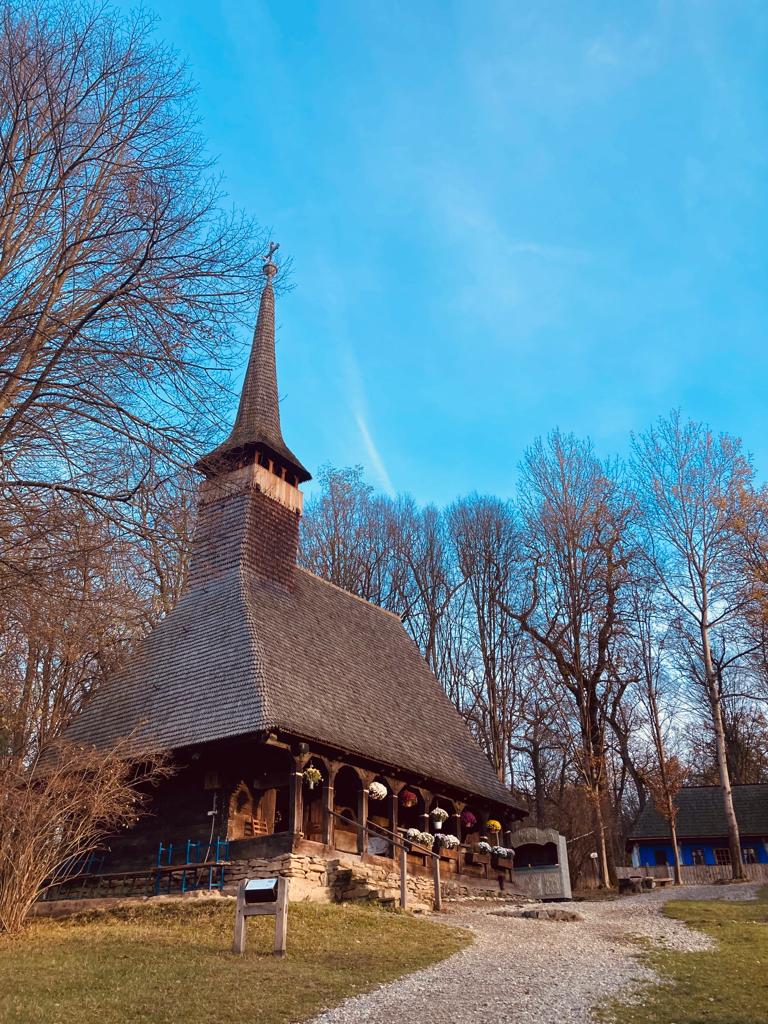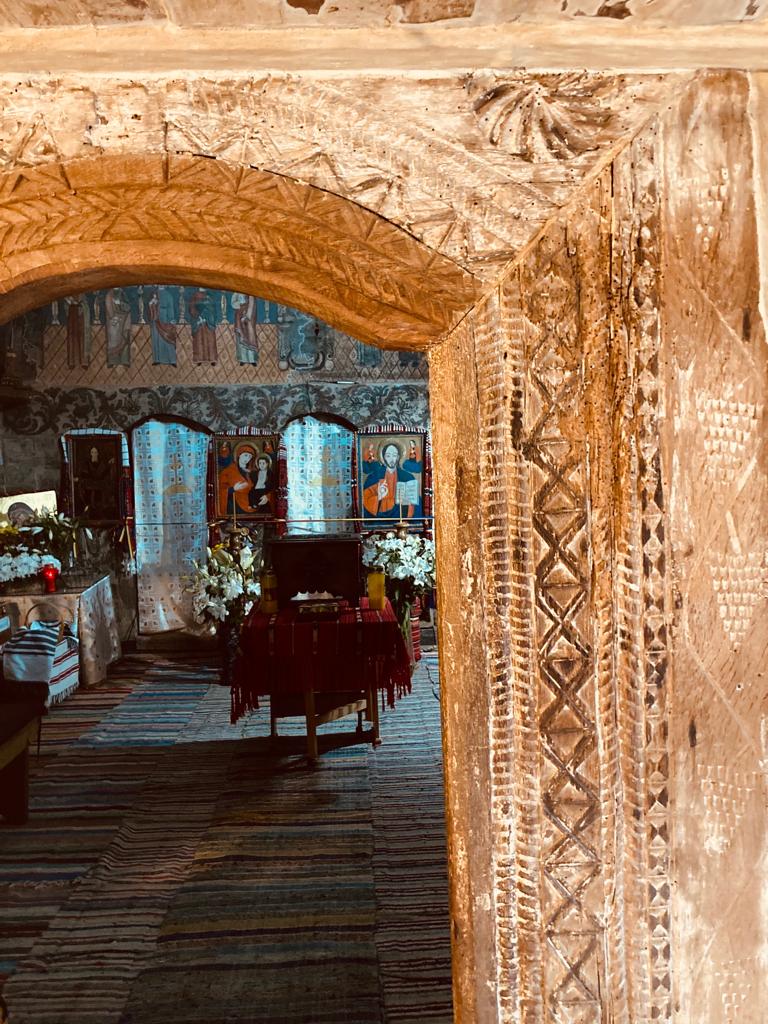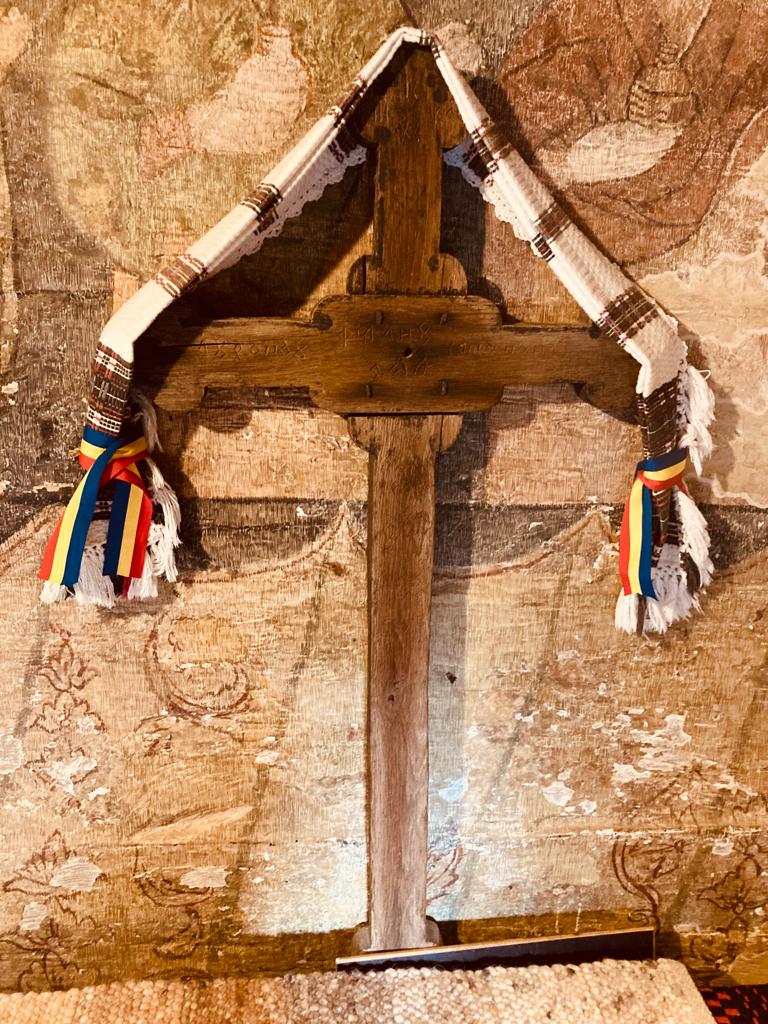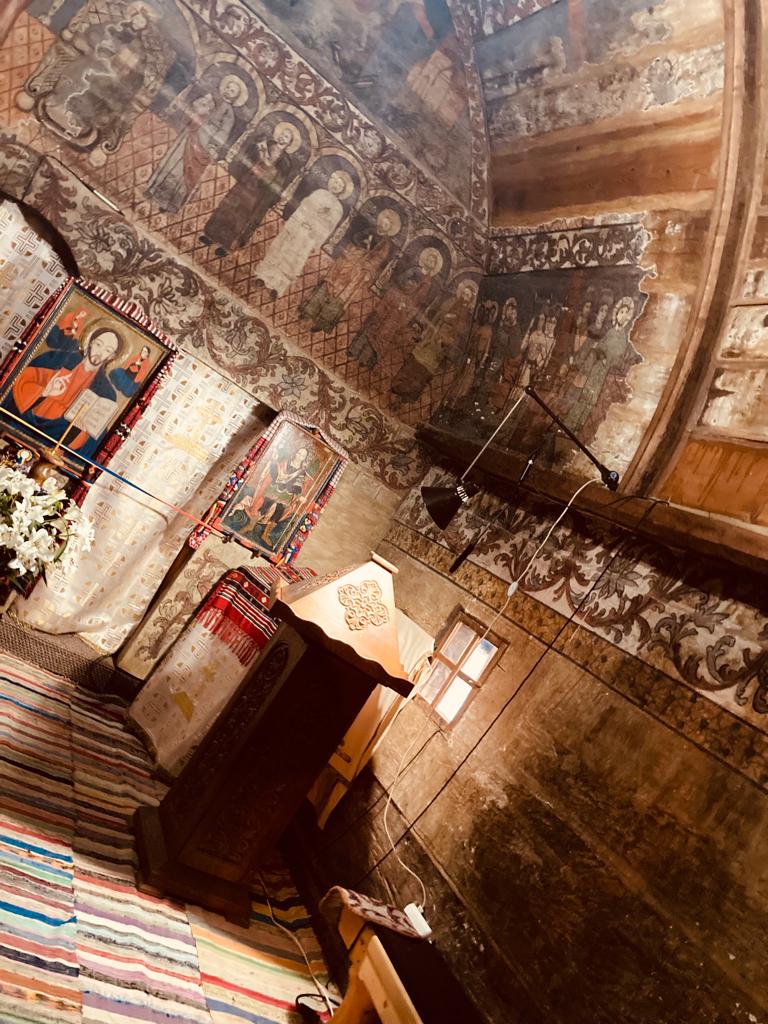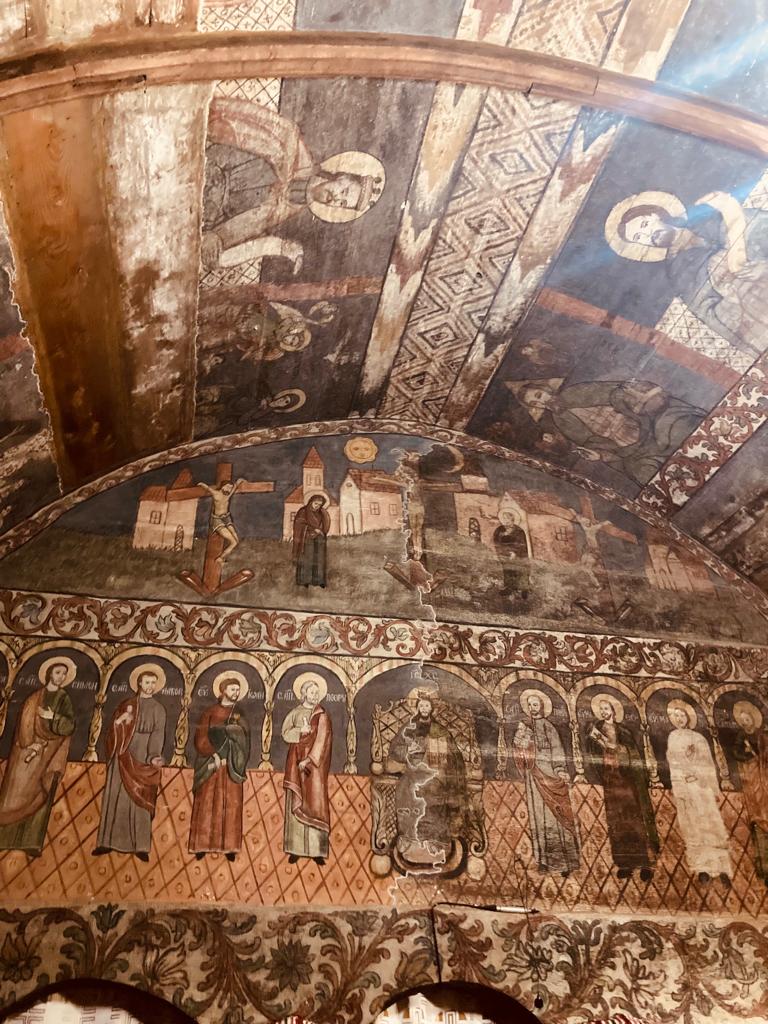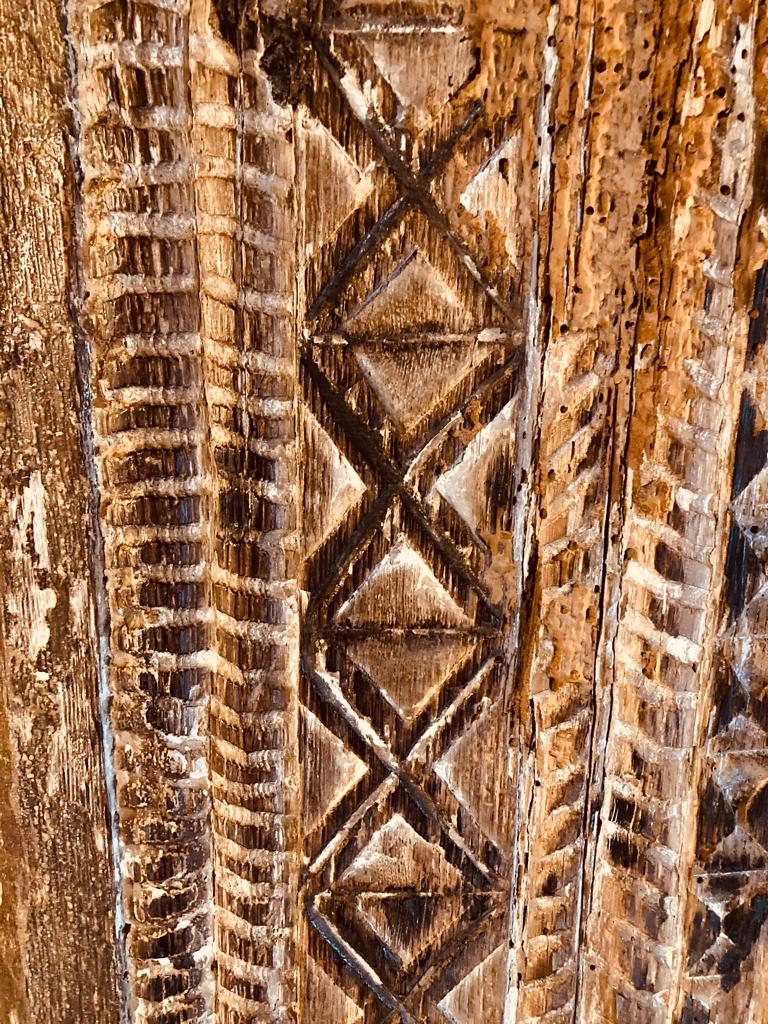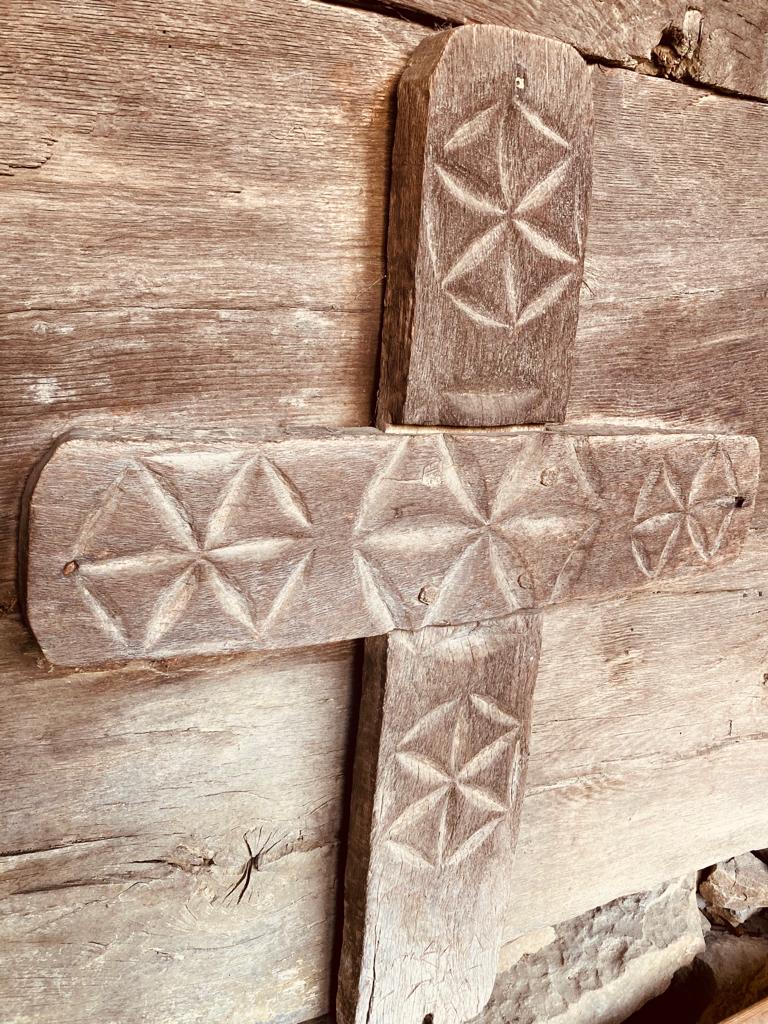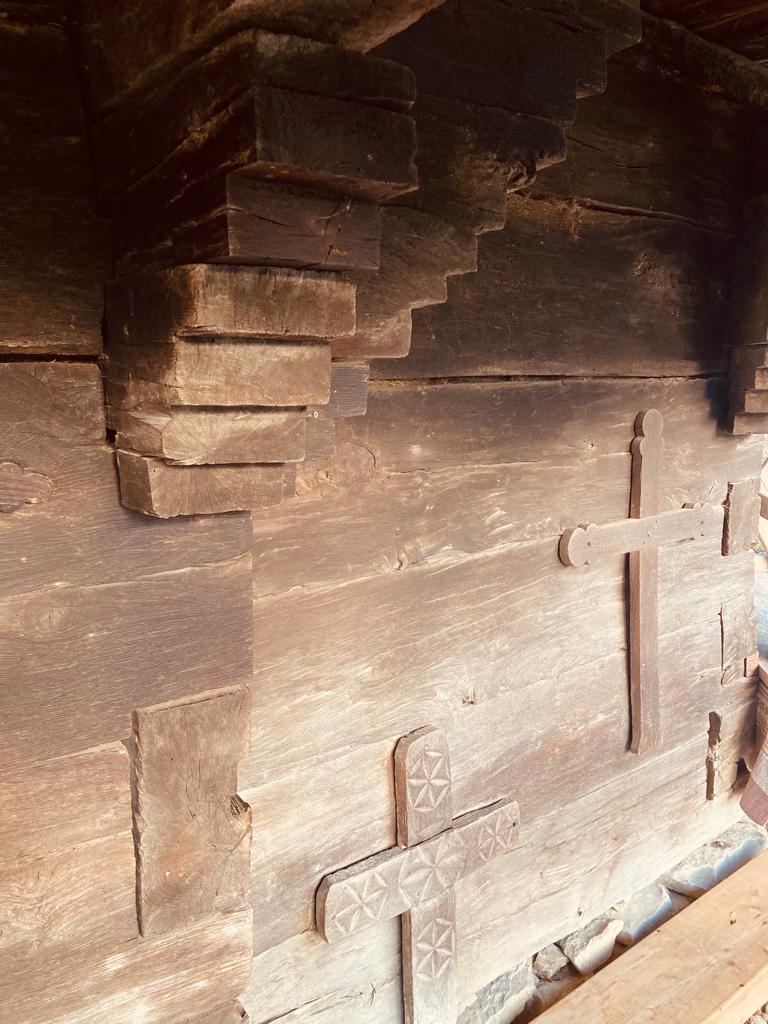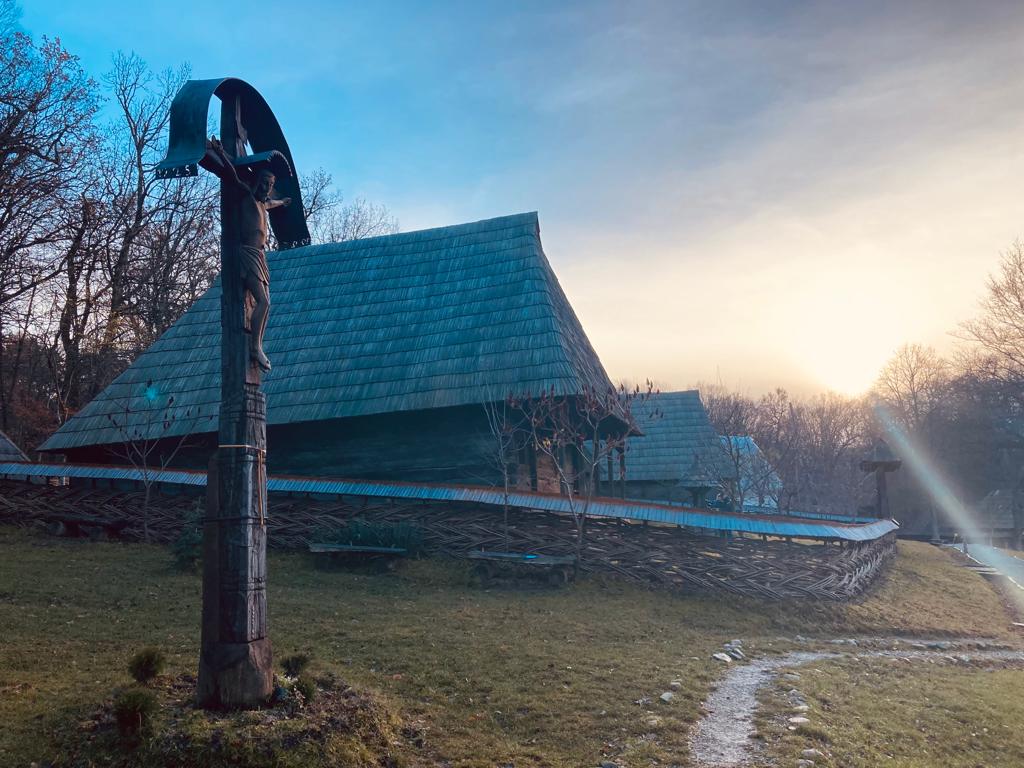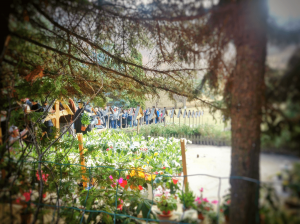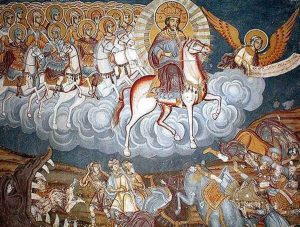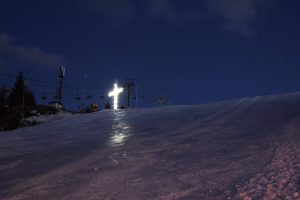Astra Museum SIBIU
Churches-Houses ✟
Taking into consideration the ground plan of the monument: „pronaos”, „naos” and altar, the presence of the porch running on the long side of it, the entrance at the Western edge, the slope of the roof as well as the material and the constructive system, one can say that the architecture of this religious building is very close and directly linked to the Romanian peasant house.
So we can call them „churches-houses” those kind of buildings where one can notice features common to both categories of buildings, suggesting the birth of the religious monuments from the old peasant houses.
Wooden Church Bezded ✟
The church dates from the second half of the 18th century Sălaj County and especially illustrates the technical procedures used by the folk carpenters in building wooden monumental constructions. The constructive system has as main feature the walls’ jointing technique of horizontal intersecting beams carved and ending butt-joints. Their endings step- profiled confer a special aesthetic effect to the whole construction.
At the same time the church offers the opportunity to notice the technical procedures used in making wooden cylindrical arches and the supportig frameworks of the high towers. All these are specific for the wooden Transylvanian churches and confer them the absolute value of the traditional folk architecture.
An old Dacian symbol 🐺
The artistic value of the monument consists in the equilibrium and the proportions of volumes, in the plastic effect as a result of the constructive system, in the dimensions and placing of the beams in, the way they are jointed at their endings and the procedures they are cut in decreasing steps. The carved omaments are the same with those belonging to the peasant houses. They are especially achieved on the porch pillars and the arcades fixed in wooden nails with flowered endings. As decoration one can see sun motifs with rhombs as borders, angular lines and „wolf tooth” (the wolf being 🐺 an old Dacian symbol 🐉).
The interior painting of the church is in the traditional iconographical style of decorating the wooden churches in Transylvania. The flowered borders have different scenes from the Bible and everyday life, realized in a skilled drawing and harmonious colours, which entirely cover the inside walls and arches. On the Southem side of the „naos” one can see „Judas’ Kiss”, „When they brought Jesus to Anna” and on the Northern side „The Entrance to Jerusalem”. In „pronaos”, on the Southern side a lay scene is painted. „The Soldier and the Death” – that reveals customs from times of yore of catching young men for army. The scene „The example of the Ten Maids” is also to be seen here having flowered borders around.
The first priest of the church was Alexandru Ioan Pop, Alexandru Papiu Ilarian’s father, (outstanding representative of the national movement for the Romanians „rights in Transylvania” in the 19th century) and that’s why the monument had gained historical value too.
„The museum is the most powerful arsenal for a people to defend its origin, identity and everything it has inherited from its ancestors” Iosif Şterca Şulutiu.
Sources: Romanian millenary Civilization in Astra Museum SIBIU 1995.
